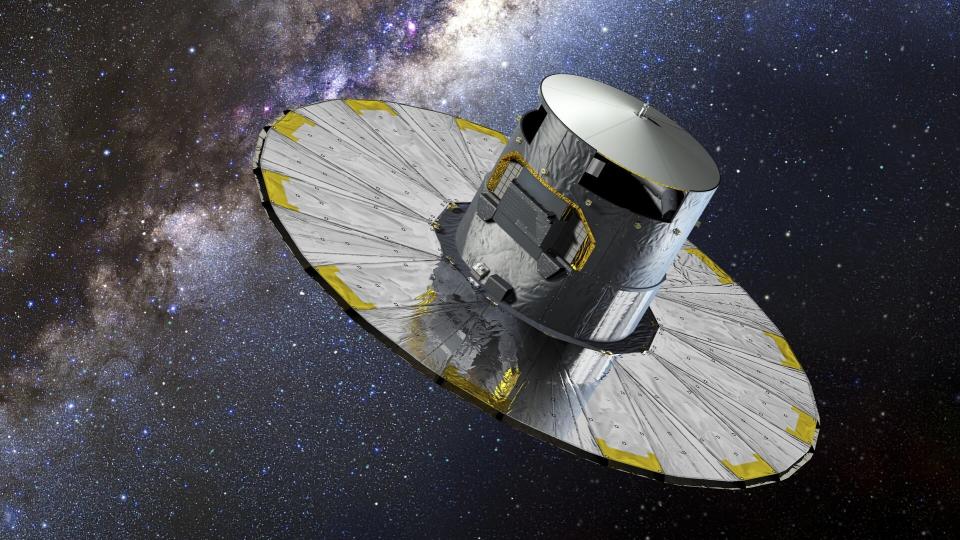White dwarfs are the stars that will be left behind when stars like the Sun “die” and smolder in space as cooling stellar embers.
Recent observations have shown that some of these stellar corpses may take longer to cool than previously expected. This means that white dwarfs may have a way to produce energy after their “death”; This challenges the classical picture of them as motionless dead stars. As a result, some white dwarfs may actually be billions of years older than currently estimated.
Scientists analyzing data from the Gaia space mission in 2019 discovered a population of white dwarfs that appear to have stopped cooling for billions of years. Now, a team of researchers led by Antoine Bédard of the University of Warwick and Simon Blouin of the University of Victoria think they know what mechanism lies behind this surprising discovery.
Relating to: 72 years is a single Earth day for this dead star
Fountain of stellar youth
White dwarfs are born as a result of stars with approximately the same mass as the Sun consuming the fuel required for nuclear fusion in their cores. This source consists of the lightest element in the universe: Hydrogen. The end of fusion in the star’s core, the conversion of hydrogen into helium, also cuts off the energy pushing outwards and prevents the star from collapsing under its own gravity, often for billions of years.
Under the influence of gravity, the outer layers of the star, where nuclear fusion still continues, are disintegrating. These layers are “inflated” to tens or even hundreds of times the star’s original radius during what is known as the red giant phase of the star’s life. Eventually, these surrounding layers disperse, leaving behind the cooling, exhausted stellar core as a white dwarf.
For the Sun, this transformation will begin in approximately 5 billion years; Our star’s red giant phase will see it expand to the radius of Mars. During this time, the Sun will engulf the inner planets, including the Earth. 97% of stars in the Milky Way will go through the same basic process to become white dwarfs.
Scientists had previously thought that white dwarfs that had run out of nuclear fuel represented the nearly inert, final stages of smaller stars. It is theorized that the plasma, once boiling and turbulent star matter at their hearts, has frozen solid as heat is no longer produced. This will result in white dwarfs solidifying from the inside out over billions of years.
Bédard and his colleagues think that for some white dwarfs, the dense plasma inside does not freeze from the inside out. They discovered a celestial fountain of youth, so to speak, beneath the crusts of some of these stars.
Inside these age-defying white dwarfs, solid crystals form as the dead star cools; These crystals can float on denser liquid.
The team says that as this solid material floats upward, it replaces the liquid material moving downward. The transport of heavier materials into the hearts of these white dwarfs causes the release of gravitational energy. This energy can be converted into heat and thus the cooling process can be stopped for billions of years.
“This description matches all observational features of the unusual white dwarf population,” Bédard said in a statement. “This is the first time this transmission mechanism has been observed in any type of star, which is exciting: It’s not every day that we uncover a brand new astrophysical phenomenon!”

One of the biggest questions raised by the discovery that white dwarfs have stopped their cooling processes is what makes them different from their “dead” counterparts. These are, as expected, cold white dwarfs.
“The difference is probably due to the composition of the star,” Blouin explained. “Some white dwarf stars are formed by the merger of two different stars. When these stars collide to form a white dwarf, the composition of the star changes in a way that allows floating crystals to form.”
Related Stories:
—James Webb Space Telescope makes rare detection of 2 exoplanets orbiting dead stars
— Fast-spinning white dwarf pulsar, the second pulsar we’ve discovered so far, sheds light on how stars evolve
— Supernova deaths of white dwarf stars can explode like nuclear bombs
Currently, when scientists look at white dwarfs, they assume that the cooler they are, the older they are. But the cooling delay experienced by these strange white dwarfs could mean they have temperatures that make them appear much younger than they actually are.
So the discovery of these age-defying white dwarfs and the mechanism they serve as “fountains of youth” could actually redefine the way astronomers date stars in general.
“The transport mechanism we uncovered means that some white dwarfs have been as bright as ‘normal’ stars for billions of years,” Bédard said. “This makes it difficult to determine ages and use white dwarfs to reconstruct the formation of our galaxy.”
The team’s research was published March 6 in the journal Nature.